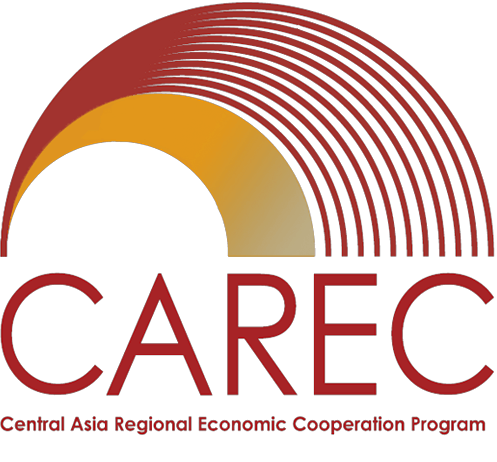Regional cooperation discussion highlights CAREC progress

The Central Asia Regional Economic Cooperation (CAREC) “ultimately seeks to create seamless connectivity and strengthen regional cooperation and integration processes in Central Asia,” Kazakhstan Vice-Minister of Economy and Budget Planning Madina Abylkassymova said at the Regional Cooperation in a Changing Global Economic Landscape on 5 March 2013 at the Asian Development Bank (ADB) headquarters, Manila. With more than $21 billion in transport and energy infrastructure projects since 2001, combined with trade facilitation and trade policy measures, she added CAREC aims to boost intra-regional and interregional trade.
Ms. Abylkassymova, on behalf of Kazakhstan’s CAREC national focal point, imparted the initiatives and achievements of CAREC over the past 11 years in four priority sectors—transport, trade facilitation, energy, and trade policy.
Transport
CAREC has identified six CAREC multimodal transport corridors that will run east–west from the north of the People’s Republic of China (PRC) to Azerbaijan in the Caucasus, and north–south from the border of Kazakhstan with the Russian Federation to the warm water ports of Karachi and Gwadar in Pakistan. Approximately 50% of the corridors have been built or rehabilitated, covering almost 4,000 kilometers (km) of road and almost 3,500 kilometers of rail networks. About $17.3 billion has been invested in these improvements.
One of the projects Ms. Abylkassymova mentioned was the $5.5 billion Western Europe–Western China Road Project along the 8,445 km CAREC Corridor 1, which runs from the PRC’s Xinjiang Uygur Autonomous Region to northwestern Kazakhstan’s border with the Russian Federation. The project is financed by four major international donors, including ADB. The Kazakhstan sections of the project total 2,787 km and are aimed to be finished by 2014.
Last year, the rehabilitation of the Zhetygen–Khorgas railway in Kazakhstan, also along Corridor 1, was completed. The rail link has helped boost transit trade between Kazakhstan and the PRC. Transit cargo from Central Asia to the PRC and Southeast Asia has increased with the opening of a second international railway check point.

Trade Facilitation
CAREC initiatives complement and maximize the transport infrastructure developments in CAREC countries. With investments amounting to $247 million since 2001, significant progress has been made, including simplifying and harmonizing customs procedures; investing in automated customs information systems; moving toward establishing national single windows; expanding joint customs control between Mongolia and the PRC; identifying regional initiatives in sanitary and phytosanitary measures; and establishing the private sector CAREC Federation of Carrier and Forwarder Associations.
The above measures, she said, have helped reduce the average time and cost to clear border-crossing points along the CAREC corridors. This, in turn, helps people and enterprises do better business, nationally, regionally, and, ultimately, globally.
Trade Policy
CAREC efforts focus on intensive capacity building and direct experience sharing, aiming for the accession of all CAREC member countries to the World Trade Organization (WTO). Ms. Abylkassymova spoke about the approval of Tajikistan’s accession package in late 2012, and its imminent ratification of full membership in 2013. Kazakhstan is also targeting WTO accession by the end of this year.
Knowledge-sharing activities will be conducted regularly to support CAREC’s objective of increased competitiveness. They aim to reduce or eliminate specific quantitative restrictions and tariffs, and simplify tax regimes related to trade.
Energy
CAREC aims to ensure energy security and efficiency for all CAREC countries, and pursue opportunities to increase regional power trade. Ms. Abylkassymova said that since 2011 about $3.7 billion has been invested in projects that have built more than 3,200 km of high-voltage transmission lines, now bringing reliable electricity supplies to the people and commerce of Central Asia. In October 2012, the CAREC Power Sector Regional Master Plan, focusing on Kazakhstan, the Kyrgyz Republic, Tajikistan, and Uzbekistan, was completed. The plan will guide investment opportunities over the coming years. An Afghanistan power sector master plan is under way.

Moving Forward
In 2012, the 11th CAREC Ministerial Conference endorsed the Wuhan Action Plan to guide and prioritize the execution of CAREC 2020. Ms. Abylkassymova mentioned at the roundtable discussion that to achieve CAREC 2020’s objectives of expanded trade and improved competitiveness, three areas have been identified: sector operational priorities, the CAREC Institute Work Plan 2013–2017, and the transport facilitation action plan.
Sector priorities include the midterm review of the CAREC Transport and Trade Facilitation Strategy, which is now under way. The review process will help direct the implementation of the 68 projects in the transport pipeline. These projects will require $23 billion in investments. The transport corridors will also be transformed into economic corridors when the six corridors are completed by 2017.
With regard to the CAREC Institute—a CAREC 2020 priority—she mentioned that its 5-year strategic knowledge framework will guide the institute in becoming a knowledge solutions hub for economic cooperation in the CAREC region. To conduct its tasks effectively, the institute will have a physical presence in the region by 2014.
Before she ended her talk, Ms. Abylkassymova said that CAREC’s portfolio of more than 130 projects over more than a decade has contributed “to regional convergence and cooperation—the building blocks of CAREC.”
CAREC brings together 10 member countries—Afghanistan, Azerbaijan, the People’s Republic of China, Kazakhstan, the Kyrgyz Republic, Mongolia, Pakistan, Tajikistan, Turkmenistan, and Uzbekistan. The CAREC countries are supported by six multilateral institution partners—ADB, the European Bank for Reconstruction and Development, the International Monetary Fund, the Islamic Development Bank, United Nations Development Programme, and the World Bank.
For the full version of Ms. Abylkassymova’s speech, click here.
(Photo credit: Office of the Regional Economic Integration, ADB)
